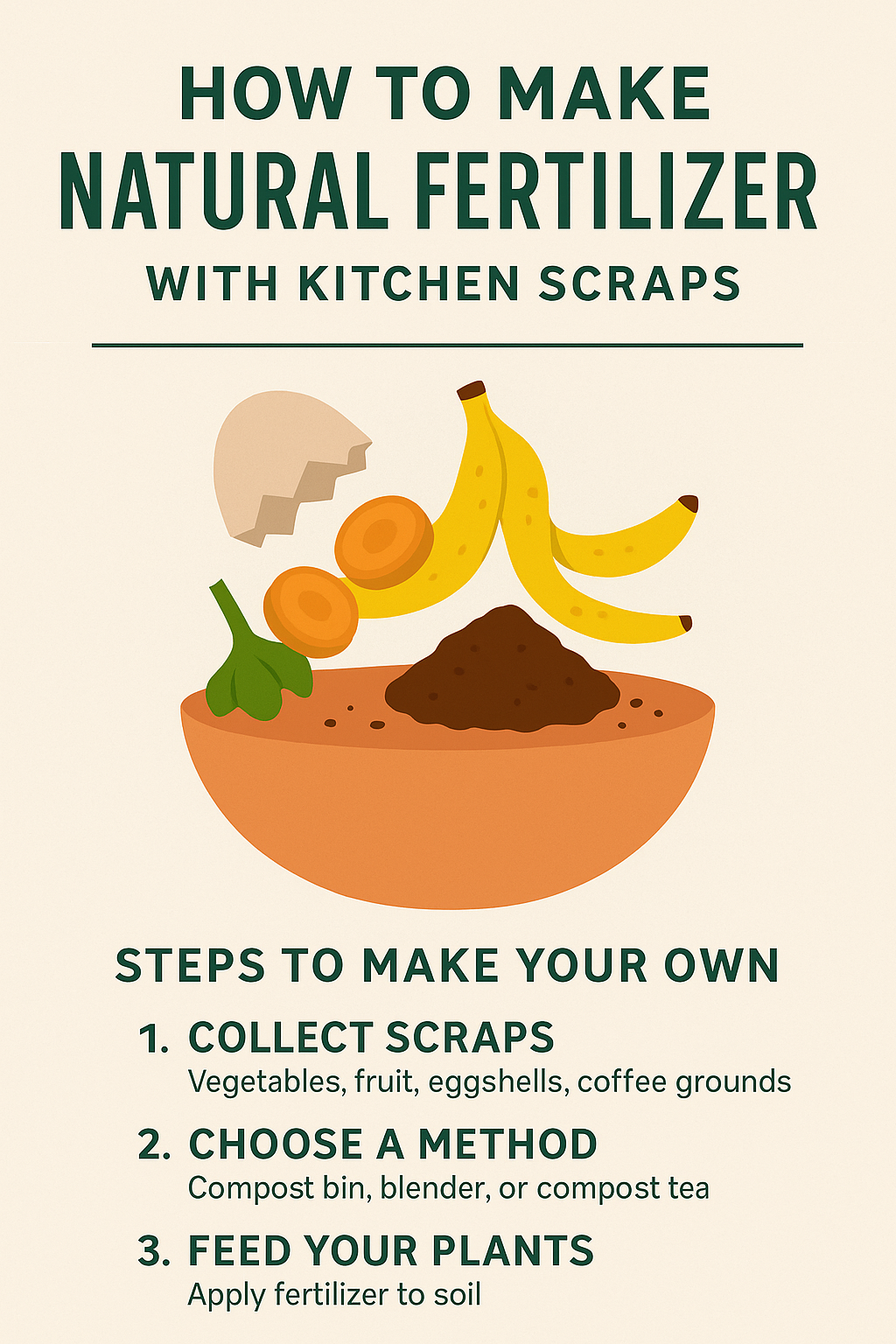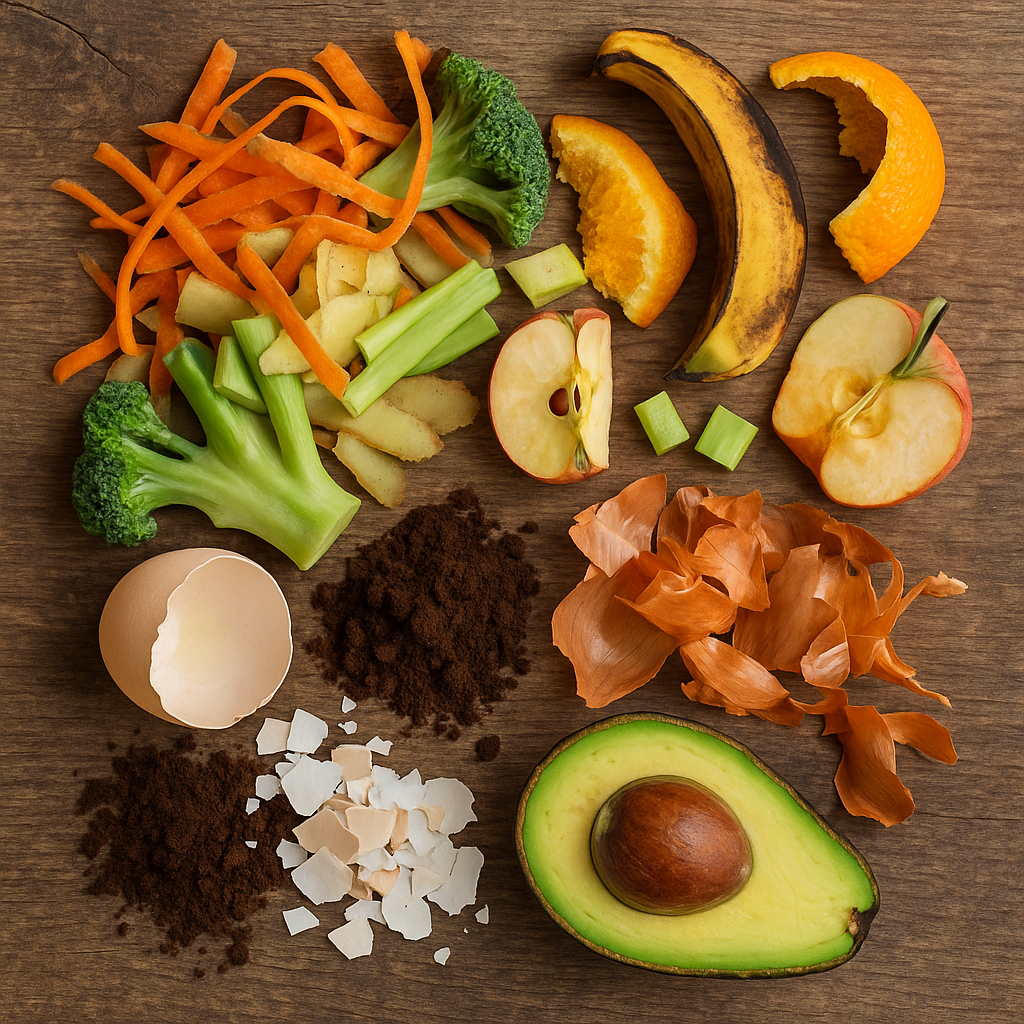How to Make Natural Fertilizer with Kitchen Scraps
Why Natural Fertilizer Matters
Using kitchen scraps as fertilizer is one of the easiest ways to nourish your plants naturally without spending money on store-bought products. Instead of throwing away banana peels, eggshells, or coffee grounds, you can recycle them into nutrient-rich compost or liquid plant food.
This DIY method supports soil health, boosts plant growth, and reduces household waste.
Common Kitchen Scraps You Can Use
Not all scraps are created equal. These are some of the best for garden use:
Banana Peels – Add potassium and phosphorus for flowering and fruiting plants.
Eggshells – Provide calcium to strengthen roots and stems.
Coffee Grounds – Add nitrogen and improve soil texture.
Vegetable Scraps – Great for composting and overall nutrient balance.
Tea Bags & Leaves – Offer a gentle nitrogen boost.
Fruit Peels – Add trace minerals and organic matter.
⚠️ Avoid meat, dairy, and oily foods—they can attract pests and slow down decomposition.
Step 1: Choose Your Fertilizer Method
There are a few easy ways to turn scraps into usable fertilizer:
1. Compost Bin Method
Collect scraps in a countertop container.
Transfer them to a compost bin or pile.
Layer greens (scraps) and browns (leaves, cardboard).
Let them break down over 2–3 months.
Use the finished compost around plants as mulch or mix into soil.
2. Blender Fertilizer (Quick Method)
Add soft scraps (like banana peels and vegetable ends) into a blender.
Blend with water until smooth.
Pour the mixture directly around the base of plants.
Lightly cover with soil to keep pests away.
3. Compost Tea
Place scraps in a bucket with water.
Let them steep for 3–5 days.
Strain the liquid and use it to water your plants.
Compost the leftover solids.
Step 2: Store and Manage Your Scraps
Keep scraps in a sealed container near your sink. For longer storage:
Use a freezer bag to avoid odor.
Empty it into your compost or blender when full.
Rinse the container regularly to keep things clean.
🪴 Pro tip: Crushing eggshells and cutting peels into small pieces speeds up decomposition.
Step 3: Apply Fertilizer to Your Garden
How and when you use your homemade fertilizer depends on the plant:
Compost: Mix into garden beds at the start of the season or use as top dressing.
Liquid Fertilizer (Tea): Water plants every 2–3 weeks during active growth.
Blended Scraps: Apply sparingly and cover with soil to prevent pests.
💧 Always water after applying fertilizer to help nutrients absorb into the soil.
Benefits of Using Natural Fertilizer
Reduces household waste
Saves money on store-bought products
Enriches soil naturally
Encourages healthy, long-lasting plant growth
Safe for kids, pets, and pollinators
FAQ: Natural Fertilizer from Kitchen Scraps
Can I use citrus peels in my garden?
Yes, but in moderation. Too much citrus can make the soil acidic.
How long does it take for scraps to break down?
Blended scraps can be used immediately. Compost piles usually take 2–3 months.
Does it smell bad?
If managed properly, no. Avoid meat and dairy, and turn compost regularly to keep it fresh.
Can I use this fertilizer on indoor plants?
Yes—just strain liquids well and apply lightly to avoid buildup.
Why It’s Worth Doing
Turning kitchen scraps into natural fertilizer is a small habit with a big impact. You’ll save money, reduce waste, and help your plants thrive without chemicals. Whether you’re composting or blending quick batches, this is one of the simplest sustainable gardening practices to start.




